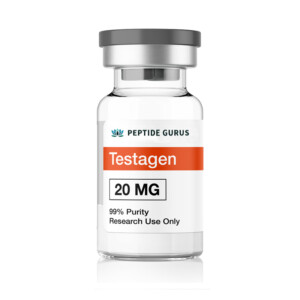Effectiveness of Fat Loss Peptide Compared to Fat Freezing Procedures
In the ever-evolving landscape of weight loss solutions, two techniques have garnered significant attention among health enthusiasts and medical professionals alike: fat loss peptides and fat freezing procedures. Each method boasts its unique advantages, promising to sculpt the body in ways that were once deemed impossible without surgery. This comprehensive analysis delves into the effectiveness of fat loss peptides in comparison to fat freezing procedures, examining their mechanisms, perfiles de seguridad, long-term results, and overall patient satisfaction.
Introducción
The quest for a leaner physique has led to the development of numerous non-invasive fat reduction methods. Among them, fat loss peptides and fat freezing (cryolipolysis) have emerged as popular choices. While both aim to eliminate stubborn fat deposits, their underlying principles, eficiencia, and suitability vary significantly.

Understanding Fat Loss Peptides
Fat loss peptides, also known as bioactive peptides or lipotropic peptides, are short chains of amino acids that naturally occur in the body or can be synthetically produced. They work by modulating various metabolic pathways, stimulating fat breakdown, and enhancing energy expenditure. Some peptides, such as CJC-1295 without DAC, IPamorelin, and AOD-9604, are specifically designed to target adipose tissue, promoting its breakdown and utilization as energy.
Mechanisms of Action
- Fat Loss Peptides: They primarily function by increasing lipolysis (fat breakdown) and inhibiting lipogenesis (fat synthesis). By enhancing the activity of enzymes involved in fat metabolism, they stimulate the release of stored fat into the bloodstream, where it can be used as fuel or excreted.
- Fat Freezing Procedures (Cryolipolysis): This technique utilizes controlled cooling to selectively target and damage fat cells, triggering their natural elimination process. The cold temperatures cause apoptosis (muerte celular programada) in adipose tissue without harming surrounding skin or vital structures.
Effectiveness Comparison
Both methods demonstrate promising results in reducing localized fat deposits, but their effectiveness can vary based on individual factors like body composition, treatment area, and adherence to lifestyle modifications.
- Fat Loss Peptides: While their efficacy is not as immediately visible as fat freezing, peptides offer a more holistic approach by addressing the underlying metabolic imbalances that contribute to weight gain. Long-term use, combined with a balanced diet and regular exercise, can lead to sustainable fat loss and improved body composition.
- Fat Freezing: The visual results of cryolipolysis are typically more pronounced and visible sooner, with noticeable changes often seen within weeks to months. Sin embargo, its effectiveness is limited to specific areas with pinchable fat and may require multiple sessions for optimal results.
Safety Considerations
- Fat Loss Peptides: When administered by experienced professionals under medical supervision, peptides are generally considered safe. Sin embargo, potential side effects include increased hunger, insomnia, and hormonal imbalances if not properly dosed.
- Fat Freezing: Cryolipolysis is FDA-approved and considered a low-risk procedure. Common side effects include temporary redness, hinchazón, bruising, and numbness in the treated area, which typically resolve within a few weeks.

Cost and Accessibility
- Fat Loss Peptides: The cost of peptide therapy varies depending on the type of peptide, dosificación, and duration of treatment. While initially more expensive, long-term use may be more cost-effective due to its potential for sustained weight management.
- Fat Freezing: The price of cryolipolysis sessions can be substantial, especially when multiple treatments are required. Sin embargo, its one-time or periodic nature and immediate visible results make it an attractive option for many.
Patient Experience and Satisfaction
Patient satisfaction with both methods is highly subjective and influenced by individual expectations, treatment outcomes, and post-treatment care. Those seeking quick, visible results may prefer fat freezing, while those looking for a more gradual, holistic approach may opt for peptide therapy.
Long-Term Results and Maintenance
- Fat Loss Peptides: Maintaining a healthy lifestyle post-treatment is crucial for sustaining the benefits of peptide therapy. Without proper diet and exercise, the body may regain lost fat.
- Fat Freezing: While results are generally long-lasting, weight gain or hormonal changes can still lead to the reaccumulation of fat in untreated areas.
Conclusión
The effectiveness of fat loss peptides compared to fat freezing procedures is a nuanced topic, with both methods offering unique advantages and limitations. While fat freezing provides faster, more visible results, fat loss peptides offer a more comprehensive approach to weight management, addressing underlying metabolic issues. Al final, the choice between the two should be based on individual needs, objetivos, and medical advice.

